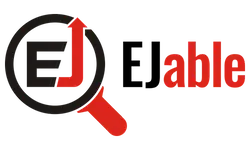Mastering the Job Hunt: A Recruiter’s Perspective

A job hunt can be challenging, often filled with uncertainties and challenges. This article delves into the essential strategies that can transform your job search, encouraging you to adopt a recruiter’s mindset.
By understanding the job market dynamics from the recruiter’s perspective, you can fine-tune your approach, making your job application stand out and increasing your chances of success.
What Makes a Job Change Difficult
Whether you are looking for a job change now or plan to do it soon, some small things can make a significant difference in making getting that new job easier.
When you are in the job market, you are the seller. And when you are the seller, you need to think like a buyer. You must understand what the buyer wants because that is the only way to sell anything. Thinking about what I want is important, but strategizing to translate “what I want” into “what they want” is vital.
What Do You Want in a Job?
- Income and benefits
- Flexibility
- Better work-life balance and personal wellbeing
- Ability to do what you do the best
- Job security and stability
But What Does an Employer Want?
- Right skillset
- Optimum salaries for the right balance of the cost and employee motivation
- Teamwork and leadership qualities
- Cultural fitment
- Flexibility and Adaptability
- Learning aptitude and change management skills
- Good soft skills
- Stability of the candidate: A history of continuous job changes within 2 years will set a loud warning alarm for most employers.
- Future potential for more responsibilities
What do you think an employer wants?
- Me?
Bridging expectations is crucial, and for that, what is very important is to understand the possible point of view of the employer and then present ourselves in a balanced way in your application and during the interviews.
You may want the employer to offer you a lot of flexibility and perks, like working from home and remote work, but the employer would also want to see flexibility.
Improving the Probability of Getting Shortlisted?
Resume and LinkedIn
The employer pays only a few seconds of attention to the resume. We may think a few seconds may be enough, but if we deep-dive and realize that a resume gets only 6 to 7 seconds for the initial screening, it becomes an eye-opener. Those 6-7 seconds decide whether the resume will be thrown away or is good enough for further attention.
A resume is the first impression a potential employer gets of you. This document pulls a potential employer in, causes them to want to learn more, and ultimately, get to know you better. In a world of information overload, a compelling resume is an easy way to get employers to take notice.
We have had a couple of instances when the team received resumes of 8 to 12 pages from potentially strong candidates. When their point of contact requested them to cut it down to a maximum of 3 to 4 pages, the reaction was:
“If an employer cannot even spend time reading through my resume to know what I have done, then I am not interested in such a company.”
Of course, we did not argue, but a couple of points here are:
- The company will not have just 5 or 10 resumes for a position. They may have 50 or even 200, if not more.
- The resume is the first introduction, not an interview. And an introduction is just that—an introduction to making the first impression.
The first impression is the most important, and the first impression of our resume is the first and most significant opportunity to build our first impression. We must remember that no one has an endless bandwidth for any task.
A picture can say 1000 words, but a thousand words don’t paint a picture

Apart from the Resume length, what else?
One size doesn’t fit all.
One resume for every position with every potential employer drastically reduces the chances of shortlisting. A job is not an “evening out” event. It is an important phase of life, a part of the career journey. It is the future. If we cannot put some good time into understanding the job description to see what an employer wants and present ourselves transparently to reflect that we are a good fit, then we are not doing justice to ourselves. Their business will run even without us.
In many large organizations, the human factor is reduced in the initial short screening. It’s always possible that some machine algorithm is doing that part of the job, and machines are just that—machines.
There are two side effects of machine screening – one is direct, and one is indirect. The direct effect is that the artificial intelligence algorithm is mainly trained to see the keywords at the right positions and their density. And the indirect effect is that using machines and various online platforms has increased the number of submissions, and there are more odds against you. So, suppose there are possibilities that human creativity might be missing at the employer or recruitment company’s end. In that case, the candidate needs to fill that void – by doing something more creative to catch the eye.
Always think that you are talking to an AI.
If you can beat that AI, which is easier to do, then with some creativity, you can win over the human who may be screening your resume instead of any artificial intelligence algorithm. Or the ones who will be screening once the AI has shortlisted your resume.
The Haystack and The You

“I have 10 years of strong experience in Android application development.“
“6 years of successful English teaching experience.”
“Demonstrated History of working as a Project Manager.”
Well, these introductions sound good, but to them or us?
Let’s go to the other side of the table and put on their shoes—the shoes of the person screening the resumes.
- There must be several resumes claiming “Strong Android experience” or “successful teaching experience.”
- There may be many resumes with similar years of experience or even more.
It’s like making ourselves a needle first and then going an extra step to put ourselves in the haystack. So why not just be a needle and make a dent?
Where and How Do We Stand Out in That Haystack of CVs?
When it comes to writing a resume, there are countless options for how to present it, how much information to include, and what facts to showcase.
The most important thing to remember when creating a resume is that the theme should reflect who you are as a person and what you want to do in your life. Instead of using your resume to state facts and showcase your accomplishments, the goal of a resume is to show that you are good at what you do and that you are passionate about it. That is where showing instead of telling, that is, demonstrating instead of merely stating facts, comes in.
Some of the examples are as follows:
- “As a designer, I’m fiercely passionate about my work. I live and breathe design – it’s not just a job for me; it’s my life. I can’t imagine doing anything else. When I’m not designing, I’m thinking about design — I can’t help it.”
- “I am passionate about helping people. I have been working in the human services field for the past ten years and have been dedicated to improving the lives of those in need. I love feeling useful, and I am committed to helping others improve their lives. I want to help people and am willing to do whatever it takes, even if it means working long hours or going the extra mile.”
In your summary and experiences, use words like:
- Achieved
- Increased (e.g., efficiency, profitability, etc.)
- Decreased (e.g., cost, manual efforts, downtime, etc.)
- Improved
- Resolved
- Created
- Launched
- Ideas
- Profit/Revenue
- Influenced
- Change management, etc.
And avoid those buzzwords or terms that people commonly copy and paste, like:
- “Demonstrated History of”
- Result-Driven
- Team Player
- Top Line & Bottom Line
- Hard Worker
- Dynamic
- Strategic Thinker
- Self-Motivated
- Detail-Oriented
- Thought Leadership
- Go-to person, etc.
You may also get some ideas from the company’s website, considering their vision & mission statements, what they are focusing on, and their future road maps.
Moreover, all the above is equally important for the interviews.
Why did we mention LinkedIn above?
Do not be surprised, but many hiring managers and recruiters visit your LinkedIn profile once they review your resume. Maintaining a healthy LinkedIn profile may increase your chances of getting through the short screening process, not just at the resume screening level but also at the interview stage.
Using LinkedIn to Create Personal Branding
Everyone can be a brand—a brand in the family, neighborhood, country, global, or desired circle.
You need to create your brand. Using LinkedIn with this objective helps in personal and professional branding, and it goes beyond creating and regularly maintaining the profile. You can use this platform for professional branding by building a solid and selective network and then building an image by sharing your knowledge, helpful content, and successes.
Interviews
Many of the above things about how you present yourself in your profile would apply to the interviews. However, an interview would last at least 45 minutes to one hour or more. And then, there would generally be more than one round with different stakeholders. The following points are crucial to enhance the chances of selection:
- Thorough preparation by not just focusing on the skillset aspects but also learning about the company
- Reflecting your Interest and Passion for the role
- Showing Your Future Potential
- Avoiding the expectation mismatch by putting your feet in the Employer’s shoes
Conclusion
In conclusion, successful job hunting requires more than just a well-written resume; it demands a strategic approach and a deep understanding of the recruiter’s perspective. By applying the insights and strategies discussed in this article, you can enhance your job search, align your application with the recruiter’s needs, and pave the way for new career opportunities.

A long-term ex-pat in Japan, Himanshu comes with an IT background in SAP consulting, IT Business Development, and then running the country operations of an IT consulting multinational. Himanshu is the co-founder and Managing Director of ReachExt K.K. and EJable.com. He is also an Advisory Board Member of a Silicon Valley AI/IoT startup.
